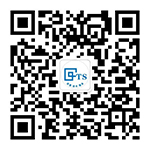Success Cases
成功案例
According to the type of light source, it is generally divided into incandescent lamp, halogen lamp, fluorescent lamp, discharge lamp, metal halide lamp and LED lamp; from the use, we can be divided into wall lamp, chandelier, ceiling lamp, down lamp, table lamp, floor lamp Street lamps, garden lights, stage lights, emergency lights, light strings and professional lamps. Similarly, the light control device can be divided into an electronic ballast and an inductive ballast.
When luminaires and lighting fixtures are certified, they must comply with the requirements of safety regulations, electromagnetic compatibility (EMC), energy consumption, and IP dustproof and waterproof rating. Battery-powered luminaires, because only low-voltage DC is used, there is no product safety concern, just consider EMC requirements; if the Adapter is a product that has passed the corresponding standard safety certification, the safety considerations are very high. Simple, EMC depends on whether the internal line uses Oscillator/Clock (clock circuit).
The main standard for the certification of luminaire products in Europe is EN60598, which is divided into two parts: The first part of EN60598-1 is the general requirement for luminaires. The second part is the special requirements, which are supplementary requirements for more than 20 kinds of lamps, such as fixed type, mobile type, light string and emergency light. The standard for energy-saving lamps is EN60968; ballasts, transformers and other lamp control devices use the standard EN61347, which is also divided into two parts: the first part of EN61347-1 is the general requirements for the safety requirements of the lamp control device. The second part is for the supplementary requirements of electronic or magnetic ballasts such as tungsten lamps, fluorescent lamps, discharge lamps, neon lamps, etc.
Note: For lamps with LED lights, photobiosafety must be evaluated in accordance with EN62471. LED modules need to comply with the safety regulations of EN62031; and the circuit parts should be considered in accordance with IEC/EN61347-1 & IEC/EN61347-2-13.
The series of certifications for lamps and lighting fixtures refers to a group of lamps with the same principle and structure but different shapes. Only the most representative lamps are selected for complete testing, so the certification cost can be greatly reduced. However, the “series” concept in the certification process differs from the series concept at the time of sale. The series of certifications for luminaire products are divided according to the circuit principle, the fixed method, the use environment, etc., for example, according to the same kind of light source, the same protection against electric shock, the same IP value, and the same standard, if divided into table lamps and Two types of wall lamps will be certified according to mobile luminaire standards and fixed luminaire standards during the certification process.
Class I: not only basic insulation, but also grounding wire, so that the basic insulation that can touch the conductive parts fails without electric shock;
Class II: Safety protection measures with basic insulation and double insulation or reinforced insulation;
Class III: Working with a safe ultra-low voltage power supply to prevent electric shock. The safety ultra-low voltage is a voltage below 50Vac.rms;
The temperature rise test of the luminaire is carried out in the windshield, which is divided into normal operation and abnormal working temperature rise:
The normal working temperature rise test is to measure the temperature at the most heated position under the normal use conditions of the lamp. During the experiment, the accessible parts, insulation materials, internal wiring or installation environment of the luminaire cannot form a temperature that affects safety.
The abnormal working temperature rise test measures the temperature rise of the luminaire under simulated faults. In this case, the temperature of the components, internal wiring and mounting surface of the luminaire shall not exceed the standard values.
Since November 1, 2010, the lighting products exported to the EU have added an EMF requirement, that is, electromagnetic radiation assessment related to human exposure is required. The corresponding standard is EN62493:2010, and the mandatory effective time of this standard is 2013. February 1st.
EMC certification of lamps
Except for incandescent lamps that do not require EMC testing, other fixtures require EMC testing. EMC testing includes both EMI and EMS, where no electronic device luminaires are exempt from EMS testing.
Luminaires and lighting fixtures in the United States need to meet FCC Part 18 requirements and require Declaration of Conformity (DoC) certification.
The IP rating refers to the dustproof and waterproof rating of electrical equipment. The IP rating of outdoor lights is generally at least to meet the requirements of IPX3. The first digit of the two-digit code in the IP rating indicates dustproof, anti-solid, foreign matter entry, the range is 0-6; the second digit of the code indicates waterproof, the range is 0-8. The illuminator of IP00 cannot apply for GS certification. , but can apply for CE or TUV certification.
The Hottest Attention
-
RoHS Top Requires Top Ten Frequently Asked Questions Q&A
-
The value of QI certification
-
What is California 65? What are the requirements for California 65? How to meet the requirements of California 65?
-
Mid-Autumn Festival holiday notice in 2019
-
2019 Chinese New Year holiday notice
-
2019 Labor Day holiday notice




